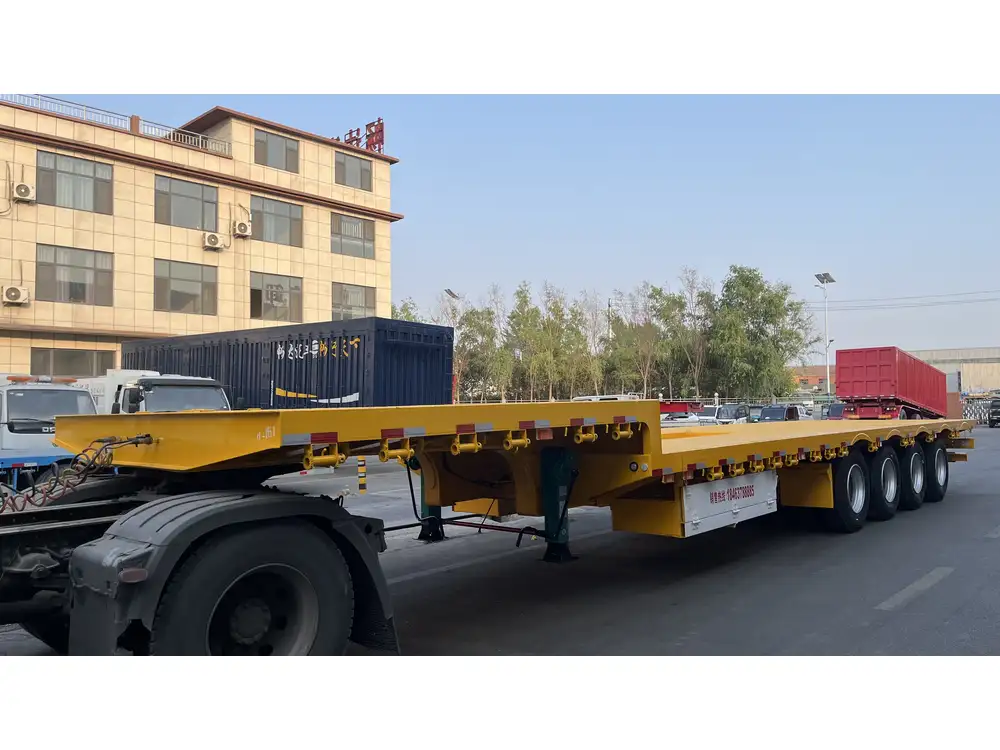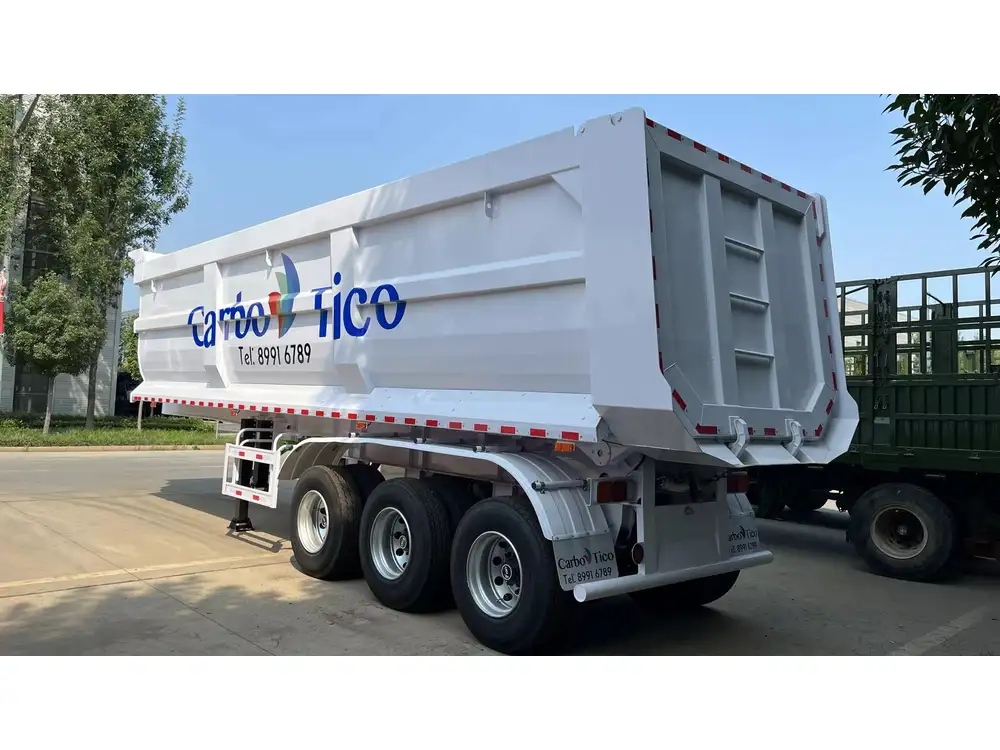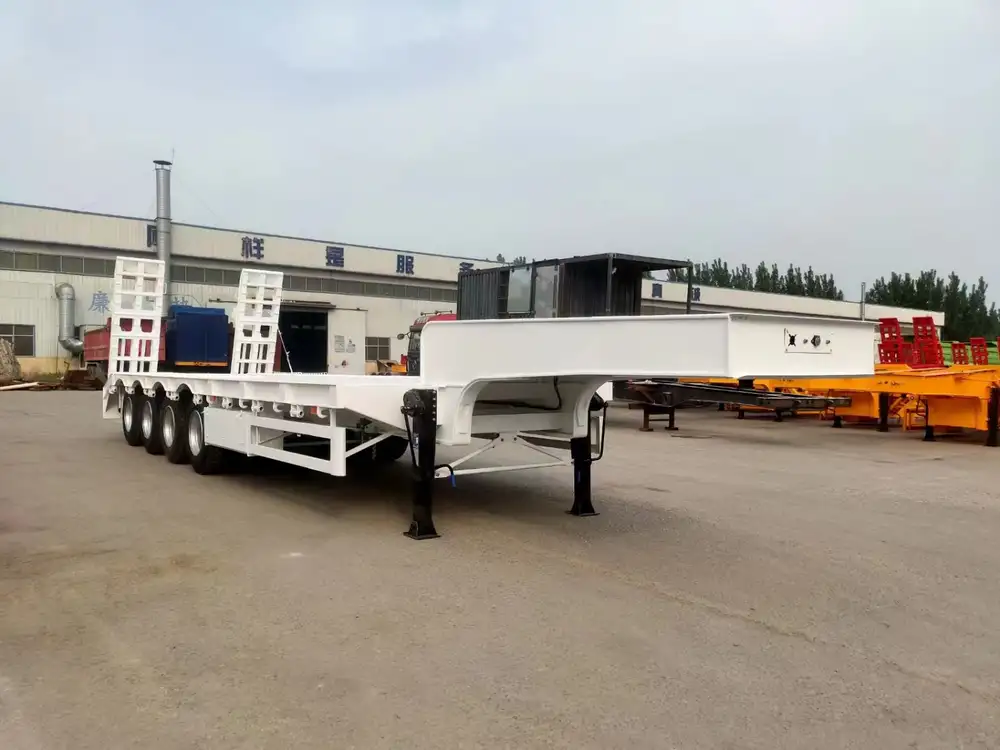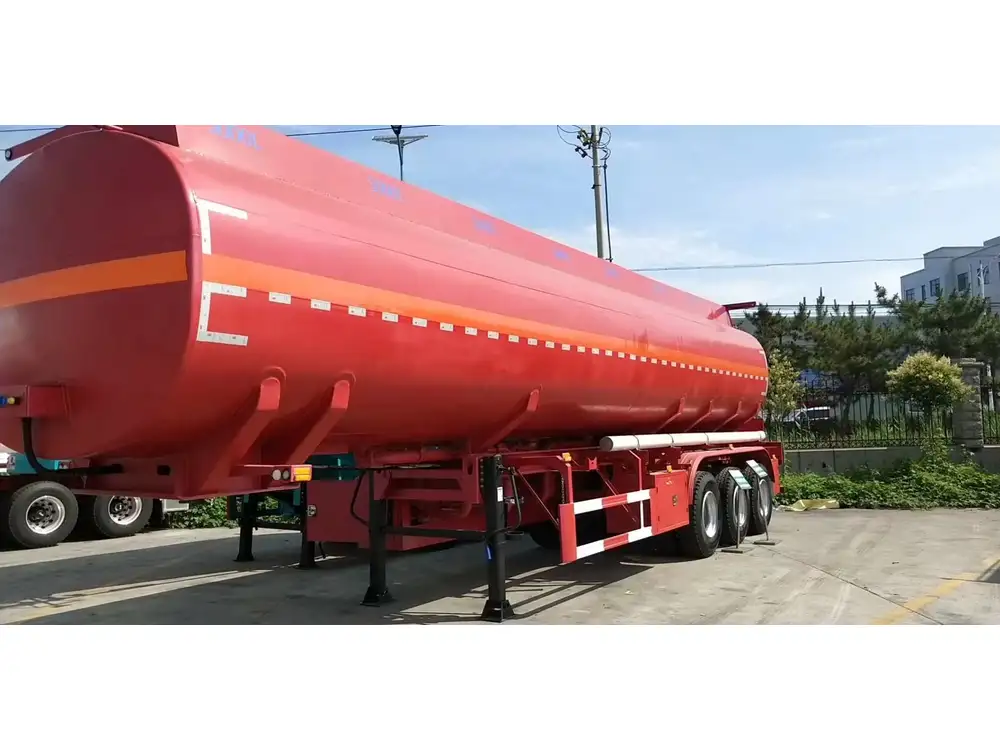In the world of hauling heavy loads, understanding the components of semi-trailers is crucial for seamless operations. One of the key components associated with semi-trailers is the hitch – a vital component that connects the trailer to the towing vehicle. In this article, we will delve deep into the intricacies of semi-trailer hitches, exploring various types, their functionalities, installation processes, maintenance tips, and more.
What Is a Semi-Trailer Hitch Called?
The term “semi-trailer hitch” typically encompasses several components; the most common terminology used includes:
- Fifth Wheel Hitch: Predominantly used in commercial trucking, the fifth wheel hitch allows for efficient weight distribution and stability while towing heavy trailers.
- Gooseneck Hitch: Often utilized in agricultural or livestock transport, the gooseneck hitch attaches to the vehicle bed and usually provides a tighter turn radius.
- Pintle Hook: This hitch system is designed for heavy-duty towing needs, commonly associated with military and industrial use. It features a hook mechanism that connects securely to a lunette ring on the trailer.
Understanding the distinctions between these terms is essential for selecting the appropriate hitch for your specific hauling requirements.
Types of Semi-Trailer Hitches
Equipped with various functions and capabilities, the choice of hitch significantly impacts the performance and handling of the semi-trailer. Below, we summarize some of the main types of hitches used in semi-trailer applications:
| Type | Description | Ideal Use Case |
|---|---|---|
| Fifth Wheel Hitch | Designed to mount above the truck’s rear axle, providing better weight distribution and the ability to tow larger loads. | Ideal for long, heavy trailers in commercial trucking. |
| Gooseneck Hitch | This hitch attaches to a ball mounted in the truck bed, allowing for a more extreme turn radius and is often favored in livestock transport. | Best for agricultural applications and livestock trailers. |
| Pintle Hook | A heavy-duty hitch system combining a hook and a ring. This type allows for great flexibility and vertical movement, perfect for challenging terrains. | Commonly used in military and industrial scenarios. |
| Bumper Pull Hitch | The simplest hitch connected to the bumper of the towing vehicle. This option is suitable for lighter loads, hence is often found in recreational vehicles. | Recreational trailers and light utility trailers. |

Detailed Analysis of Each Hitch Type
Fifth Wheel Hitch
The fifth wheel hitch features a kingpin mechanism that secures the trailer directly onto the towing vehicle, ensuring a stable connection that can support substantial weight. This hitch’s design allows for smooth maneuvering and reduces stress on the towing vehicle. Notably, the positioning of the hitch above the truck’s rear axle also results in better weight distribution, which is particularly advantageous during turns and stops.
- Key advantages:
- Enhanced stability and weight distribution.
- Simple alignment for easy coupling and uncoupling.
- Allows for significant payload capacity.
Gooseneck Hitch
A gooseneck hitch is another common option, especially in the agricultural sector. This hitch is designed for trailers that carry livestock or heavy equipment. A gooseneck trailer typically includes a long neck that extends over the truck bed, connecting at a trailer ball positioned within it.
- Key advantages:
- Compact design allows for tighter turns.
- Provides stability for larger payloads.
- Generally offers a higher towing capacity than bumper pull hitches.

Pintle Hook
The pintle hook system is favored for heavy-duty transport tasks. It comprises two main components: a hook mechanism and a lunette ring. This pairing provides a flexible connection that can manage significant vertical and lateral movement, making it particularly suitable for uneven terrains.
- Key advantages:
- Exceptional strength and reliability for heavy loads.
- Versatile application in both civilian and military scenarios.
- Compatible with a variety of trailer designs.
Bumper Pull Hitch
The bumper pull hitch serves as the most straightforward option for those needing to tow small to medium loads. This hitch relies on a coupler connected to the vehicle’s rear bumper, making it easy to hitch and unhitch without requiring specialized equipment.
- Key advantages:
- Simplicity in design and usage.
- Cost-effective, suitable for everyday use.
- Ideal for light to moderate trailers.
Selecting the Right Hitch for Your Needs
When determining the appropriate hitch type, consider the following factors:
- Weight Capacity: Each hitch has a specific weight limit. Ensure that the chosen hitch can handle the weight of your trailer and cargo.
- Intended Use: Depending on your hauling needs, select a hitch type that fits your application. Commercial transport may lean towards fifth wheel hitches, while agricultural needs might require gooseneck hitches.
- Vehicle Compatibility: Not all hitches are compatible with every vehicle. Verify that the selected hitch can be installed on your towing vehicle without modifications.
- Terrain Considerations: If traveling over rough terrain, a pintle hook, with its flexibility, might prove advantageous compared to a more rigid fifth wheel system.

Installation Processes for Semi-Trailer Hitches
Proper installation of a semi-trailer hitch is crucial for safe transportation. Below are the general steps involved in installing different types of hitches:
Fifth Wheel Hitch Installation
- Positioning: Determine the correct position for the fifth wheel plate, ideally above the truck’s rear axle.
- Mounting Brackets: Secure the mounting brackets to the truck frame as specified by the manufacturer.
- Attach the Plate: Use the bolts provided to connect the fifth wheel plate to the mounting brackets.
- Safety Check: Once installed, conduct a thorough inspection to ensure all fittings are secure.
Gooseneck Hitch Installation
- Locate the Center: Measure and mark the center of the truck bed for the gooseneck ball installation.
- Drill a Hole: Using the appropriate drill bit, create a hole for the ball assembly.
- Install the Ball: Secure the gooseneck ball in place, ensuring it is firmly fitted.
- Test Connection: Tap the ball with the trailer to confirm stability.

Pintle Hook Installation
- Choose Placement: Select an appropriate mounting point on the vehicle’s rear to support the weight distribution of the pintle hook.
- Mount the Hook: Attach the pintle hook securely to the mount using bolts.
- Check Alignment: Ensure that the lunette ring fits comfortably within the hook mechanism and check for alignment.
- Conduct Safety Test: Verify that the coupler operates correctly with the trailer in tow.
Maintenance of Semi-Trailer Hitches
Routine maintenance of your semi-trailer hitch is vital to ensure efficiency and safety. Here are some tips to keep your hitches in top shape:
- Regular Inspections: Examine hitch components for signs of wear, rust, or damage.
- Lubrication: Moving parts, especially on fifth wheels and pintle hooks, should be regularly lubricated to avoid seizure during use.
- Tightening Bolts: Over time, bolts may loosen. Regularly check and tighten them to maintain structural integrity.
- Cleaning: Remove dirt and debris that can affect the hitch’s functionality, especially after trips on rough terrains.
Troubleshooting Common Hitch Issues
Despite proper installation and maintenance, issues can occasionally arise. Here’s a brief overview of common problems and their solutions:
| Problem | Possible Cause | Solution |
|---|---|---|
| Hitch wobbling | Loose bolts or misaligned hitch | Tighten the bolts and check alignment. |
| Difficulty in coupling/uncoupling | Dirt buildup or lack of lubrication | Clean the hitch and apply appropriate lubricants. |
| Uneven weight distribution | Incorrect hitch type or misaligned | Ensure the right hitch is used and check its placement. |

Conclusion
Understanding the nuances of semi-trailer hitches is essential for effective hauling operations. Choosing the right type of hitch not only ensures safety but also enhances your vehicle’s performance under load. Whether you opt for a fifth wheel, gooseneck, pintle hook, or bumper pull hitch, each has unique advantages suited for different towing needs.
By taking the time to select, install, and maintain your hitch correctly, you set the foundation for efficient transport logistics, allowing your operations to run smoothly, regardless of the terrain. For manufacturers and drivers alike, investing in quality hitch systems and understanding their applications can lead to improved productivity and safety on the road.



